�
English reprint edition copyright © 2009 by Pearson Education Asia Limited and
China Machine Press.
Original English language title: Introductory Combinatorics, Fifth Edition (ISBN
978-0-13-602040-0) by Richard A. Brualdi, Copyright © 2010, 2004, 1999, 1992,
1977 by Pearson Education, Inc.
All rights reserved.
Published by arrangement with the original publisher, Pearson Education, Inc.,
publishing as Prentice Hall.
For sale and distribution in the People's Republic o( China exclusively (except
Taiwan, Hong Kong SAR and Macau SAR).
*=I'1*:Jc~EP Jlti EI3 Pearson Education Asia Ltd·tf&,fJL,j;jI~ t±:I Jlti1±5!1l;R t±:I Jlti 0
*~t±:IJlti.=I'100W~,~~QffM~~~~~~.*=I'1~~o
&.~~$A~*~OO~~(~~M~OO~m .• nM~fiROC~~OO~~
it!! OC) ti'f ~ :& 1']- 0
*=I'1t-tOOm6:ftPearson Education (:I:.g:1::~l'l' t±:IJlti~ffi) i*:J't!)jjffJfu;~, 7Cfu;~
.~l~ti'f~o
Jl&tJlJiJf~, ~tJl!lO~o
*~*~~~ ~.*~~~~~.JiJf
*~JI&~~ia~: 111*: 01-2009-1361
III ~ ;ffJl&~ ~ ( CIP) ~.
tfl~~~ (~:JcJlti . ~5Jlti) / (~) :;flJ'l-j@ (Brualdi, R. A.) if. -~~*: ,fJL
lJItI~t±:IJlti1±, 2009.3
( ~ ~ Iffi Jlti =1'1 J! )
=I'1~Iffi:Jc: Introductory Combinatorics, Fifth Edition
ISBN 978-7-111-26525-2
I. tfl···
II. :;flJ... m. tfl~~~-~M-~:Jc IV. 0157
,fJL,j;jI~t±:IJlti1± (~tffir!T]l!iJ;&1K ~iJJ!l:*m22% iI!~i&tli!~ l00037)
~ff~m: iKtJHF
~Lrjc.?~QiIlEP ~:ff.0iil f1111: lj
2009if-3 j} ~ lJlti~ I & Ep,\jlIJ
150mm x 214mm • 19.375EPStt
fu;lt=l'1%: ISBN 978-7-111-26525-2
JEff)-: 49.00jC
�
~~~~0.,.lli~*~n~M~~~~m~~~*~m,~fi~
OO~a~Mn~~~~~~*~T£.ft~~.,~~A~~~ffl.,~
~OOamAtt*~B~~+~~~£~~lli.~~m~oaft~~~*~
~, ~OO~~~~~~~~~*~~*~~~,rr.m~n~~~~*w
~t41i'fl1Jt~~H4liJf;fo~~~l\llltrti, B3Jltffij~1:.~~~n~~f'F, /Ff)(.
~TliJf~~m_,~.ffiT~*~.~, ~.oo~*~m,x~~~~~
ft,~~m*/F~~~fl~~~ffij~~o
~~,a~*mA~*.~.~~,fiOO~rr.m~~~Bili~,~
~~A~~.*B~~mo~~rr.m~~~~lli~~W~Am~,~A
.~;ffij*~~M~.~a~~~.~R~*~Q.oafioomAtt*~
BIJt~~5~~~~, ~oo~~~oo~a~rr.mn~~B~A+$~~
iJE;fo~B~g2~~MfJJ~it~f1i1~ft~z~o ~Jlt, 51*-1!tOOj~~3'Ht
.m~M~~fiOOrr.m~~.~~~B~~~m~.~~m,~A~~
~~~ .• ~~~~~~-~*~~~B3Z~o
m;ffllI~lli~U~~7H±~1f.~iR¥1j "lli~~7-J~~nli97" 0 ~ 1998$
*M,~~~U.~I~.~~aT~~.8~OO~~~~M~o~M~
~~/F1f&r~jJ, fi1f1~Pearson, McGraw-Hill, Elsevier, MIT, John
Wiley & Sons, Cengage~~~~£lli~0-i'f].iz:.T~tff~~f'F**, hAft!?
1f1~~~~5(Bf!tt~Mq:tft~lliAndrew S. Tanenbaum, Bjarne Stroustrup,
Brain W. Kernighan, Dennis Ritchie, Jim Gray, Afred V. Aho, John E.
Hopcroft, Jeffrey D. Ullman, Abraham Silberschatz, William Stallings,
Donald E. Knuth, John L. Hennessy, Larry L. Peterson~*~iP£~~-1!tg2
~~~, 0"rr.mn~~~"7-J~.lli~,m~~~~.liJf~&$.o
*m~ttm~MW,~~*~T~~~~~~~~ •• o
"~.mn~~~"~lli~I~~~TOO~~~~~~jJ.M, OO~~
~~/Ff)(.mT~~~~.m%,~/Fff~~~mffTn~~$~~I
�
iv
~;ffi~~~~~&~~~~~~~~~~~fflM, ~~ffi~~~~~~
~~*~*.~+, "~.mn~M~" B~lli~T~~N~~~, ~®
~M~~~~W~T~H~Q~,#.W$~~*m~~~.M~#~~
M. ~~~~"~A~~~$"~~~~.& •• *.$~.~m.~
~~~JlJT*m.
~~~~~. ~A~.M. -~~~~. F.~$~.ME~~.,
~®~.~fim~OO~~T~~~*~.~.~.mn~~tt*~~~M
.~~~.~.~.M&*~~.~~, .. ~~~*~.m.M~.*
~~m~~~A-~~~~~,fim~§~~~~~~, ~&~~.m~
~fim~~~-~.§~~.~moo.~.~tl~~~~~~~~fim~
I~.lli.~~~~m~, fim~G~~~~T:
$~[XJgj}~: www.hzbook.com
Eg T~Ht: hzjsj@hzbook.com
.IIHj~Eg1.~: (010) 88379604
�
I have made some substantial changes in this new edition of Introductory Combi
natorics, and they are summarized as follows:
Preface
In Chapter 1, a new section (Section 1.6) on mutually overlapping circles has been
added to illustrate some of ,the counting techniques in later chapters. Previously
the content of this section occured in Chapter 7.
The old section on cutting a cube in Chapter 1 has been deleted, but the content
appears as an exercise.
Chapter 2 in the previous edition (The Pigeonhole Principle) has become Chap
ter 3. Chapter 3 in the previous edition, on permutations and combinations, is
now Chapter 2. Pascal's formula, which in the previous edition first appeared
in Chapter 5, is now in Chapter 2. In addition, we have de-emphasized the use
of the term combination as it applies to a set, using the essentially equivalent
term of subset for clarity. However, in the case of multisets, we continue to use
combination instead of, to our mind, the more cumbersome term submultiset.
Chapter 2 now contains a short section (Section 3.6) on finite probability.
Chapter 3 now contains a proof of Ramsey's theorem in the case of pairs.
Some of the biggest changes occur in Chapter 7, in which generating functions
and exponential generating functions have been moved to earlier in the chapter
(Sections 7.2 and 7.3) and have become more central.
The section on partition numbers (Section 8.3) has been expanded.
Chapter 9 in the previous edition, on matchings in bipartite graphs, has under
gone a major change. It is now an interlude chapter (Chapter 9) on systems of
distinct representatives (SDRs)-the marriage and stable marriage problems
and the discussion on bipartite graphs has been removed.
As a result of the change in Chapter 9, in the introductory chapter on graph
theory (Chapter 11), there is no longer the assumption that bipartite graphs
have been discussed previously.
The chapter on more topics of graph theory (Chapter 13 in the previous edition)
has been moved to Chapter 12. A new section on the matching number of a
graph (Section 12.5) has been added in which the basic SDR result of Chapter
9 is applied to bipartite graphs.
�
Vi Preface
The chapter on digraphs and networks (Chapter 12 in the previous edition) is
now Chapter 13. It contains a new section that revisits matchings in bipartite
graphs, some of which appeared in Chapter 9 in the previous edition.
In addition to the changes just outlined, for this fifth edition, I have corrected all
of the typos that were brought to my attention; included some small additions; made
some clarifying changes in exposition throughout; and added many new exercises.
There are now 700 exercises in this ,fifth edition.
Based on comments I have received over the years from many people, this book
seems to have passed the test of time. As a result I always hesitate to make too
many changes or to add too many new topics. I don't like books that have "too many
words" (and this preface will not have too many words) and that try to accomodate
everyone's personal preferences on topics. Nevertheless, I did make the substantial
changes described previously because I was convinced they would improve the book.
As with all previous editions, this book car be used for either a one- or two
semester undergraduate course. A first semester could emphasize counting, and a
second semester could emphasize graph theory and designs. This book would also
work well for a one-semester course that does some counting and graph theory, or some
counting and design theory, or whatever combination one chooses. A brief commentary
on each of the chapters and their interrelation follows.
Chapter 1 is an introductory chapter; I usually select just one or two topics from
it and spend at most two classes on this chapter. Chapter 2, on permutations and
combinations, should be covered in its entirety. Chapter 3, on the pigeonhole principle,
should be discussed at least in abbreviated form. But note that no use is made later of
some of the more difficult applications of the pigeonhole principle and of the section on
Ramsey's theorem. Chapters 4 to 8 are primarily concerned with counting techniques
and properties of some of the resulting counting sequences. They should be covered in
sequence. Chapter 4 is about schemes for generating permutations and combinations
and includes an introduction to partial orders and equivalence relations in Section 4.5.
I think one should at least discuss equivalence relations, since they are so ubiquitous
in mathematics. Except for the section on partially ordered sets (Section 5.7) in
Chapter 5, chapters beyond Chapter 4 are essentially independent of Chapter 4, and
so this chapter can either be omitted or abbreviated. And one can decide not to cover
partially ordered sets at all. I have split up the material on partially ordered sets into
two sections (Sections 4.5 and 5.7) in order to give students a little time to absorb
some of the concepts. Chapter 5 is on properties of the binomial coefficients, and
Chapter 6 covers the inclusion-exclusion principle. The section on Mobius inversion,
generalizing the inclusion-exclusion principle, is not used in later sections. Chapter 7
is a long chapter on generating functions and solutions of recurrence relations. Chapter
8 is concerned mainly with the Catalan numbers, the Stirling numbers of the first and
second kind, partition numbers and the large and small Schroder numbers. One could
stop at the end of any section of this chapter. The chapters that follow Chapter 8 are
�
Preface Vll
independent of it. Chapter 9 is about systems of distinct representatives (so-called
marriage problems). Chapters 12 and 13 make some use of Chapter 9, as does the
section on Latin squares in Chapter 10. Chapter 10 concerns some aspects of the
vast theory of combinatorial designs and is independent of the remainder of the book.
Chapters 11 and 12 contain an extensive discussion of graphs, with some emphasis on
graph algorithms. Chapter 13 is concerned with digraphs and network flows. Chapter
14 deals with counting in the presence of the action of a permutation group and does
make use of many of the earlier counting ideas. Except for the last example, it is
independent of the chapters on graph theory and designs.
When I teach' a one-semester cour~e out of this book, I like to conclude with
Burnside's theorem, and several applications of it, in Chapter 14. This result enables
one to solve many counting problems that can't be touched with the techniques of
earlier chapters. Usually, I don't get to P6lya's theorem.
Following Chapter 14, I give solutions and hints for some of the 700 exercises in
the book. A few of the exercises have a * symbol beside them, indicating that they
are quite challenging. The end of a proof and the end of an example are indicated by
writing the symbol D.
It is difficult to assess the prerequisites for this book. As with all books intended
as textbooks, having highly motivated and interested students helps, as does the en
thusiasm of the instructor. Perhaps the prerequisites can be best described as the
mathematical maturity achieved by the successful completion of the calculus sequence
and an elementary course on linear algebra. Use of calculus is minimal, and the refer
ences to linear algebra are few and should not cause any problem to those not familiar
with it.
It is especially gratifying to me that, after more than 30 years since the first edition
of Introductory Combinatorics was published, it continues to be well received by many
people in the professional mathematical community.
I am very grateful to many individuals who have given me comments on previous
editions and for this edition, including the discovery of typos. These individuals in
clude, in no particular order: Russ Rowlett, James Sellers, Michael Buchner, Leroy
F. Meyers, Tom Zaslavsky, Nils Andersen, James Propp, Louis Deaett, Joel Brawley.
Walter Morris, John B. Little, Manley Perkel, Cristina Ballantine, Zixia Song, Luke
Piefer, Stephen Hartke, Evan VanderZee, Travis McBride, Ben Brookins, Doug Shaw,
Graham Denham, Sharad Chandarana, William McGovern, and Alexander Zakharin.
Those who were asked by the publisher to review the fourth edition in preparation for
this fifth edition include Christopher P. Grant who made many excellent comments.
Chris Jeuell sent me many comments on the nearly completed fifth edition and saved
me from additional typos. Mitch Keller was an excellent accuracy checker. Typos, but
I hope no mistakes, probably remain and they are my responsibility. I am grateful to
everyone who brings them to my attention. Yvonne Nagel was extremely helpful in
solving a difficult problem with fonts that was beyond my expertise.
�
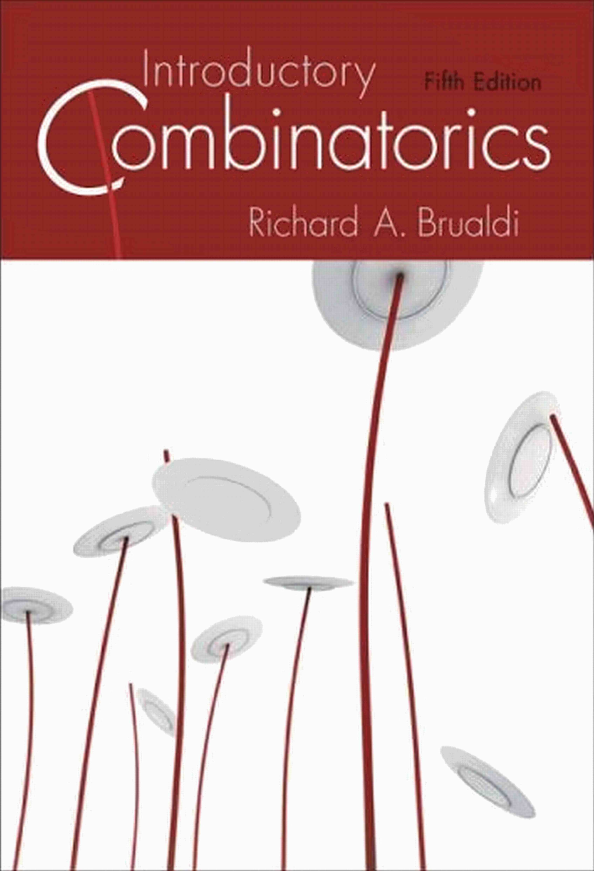
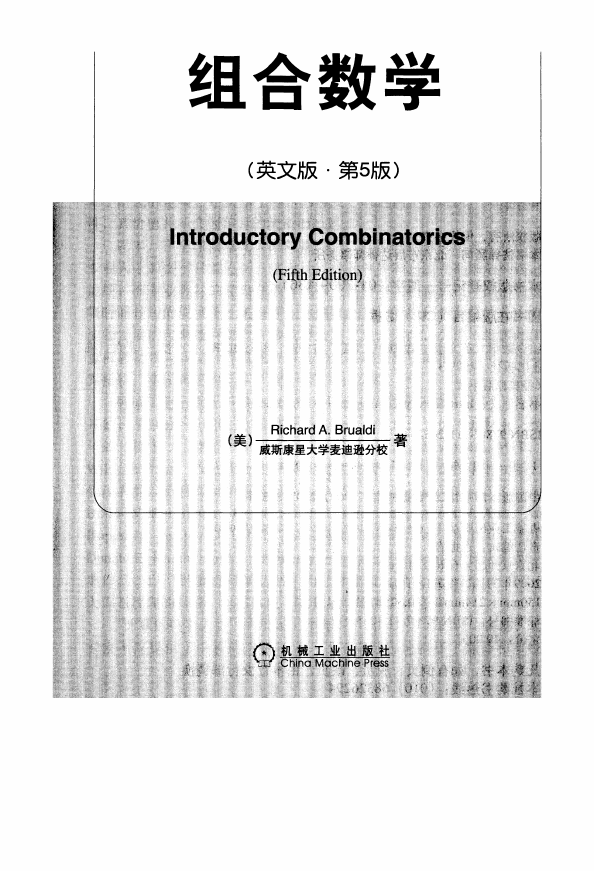
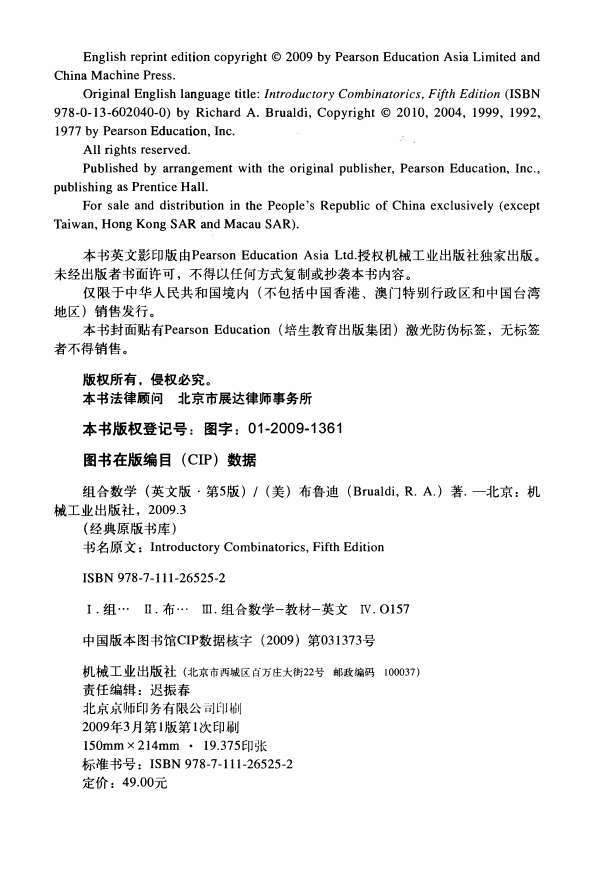
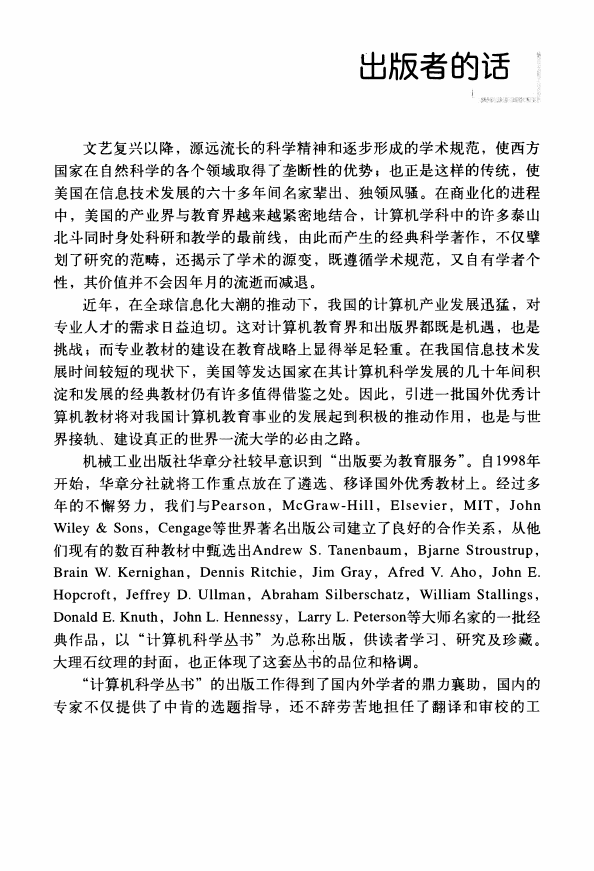
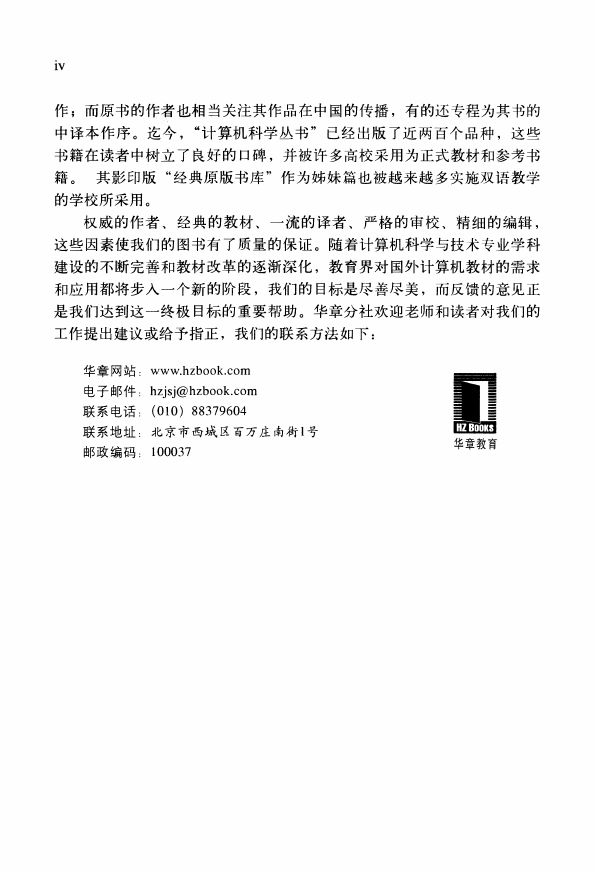
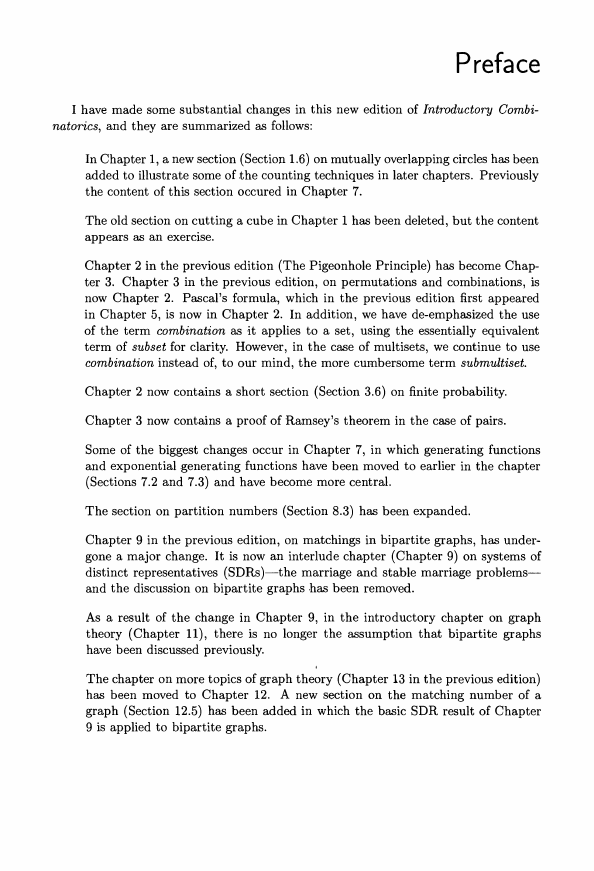
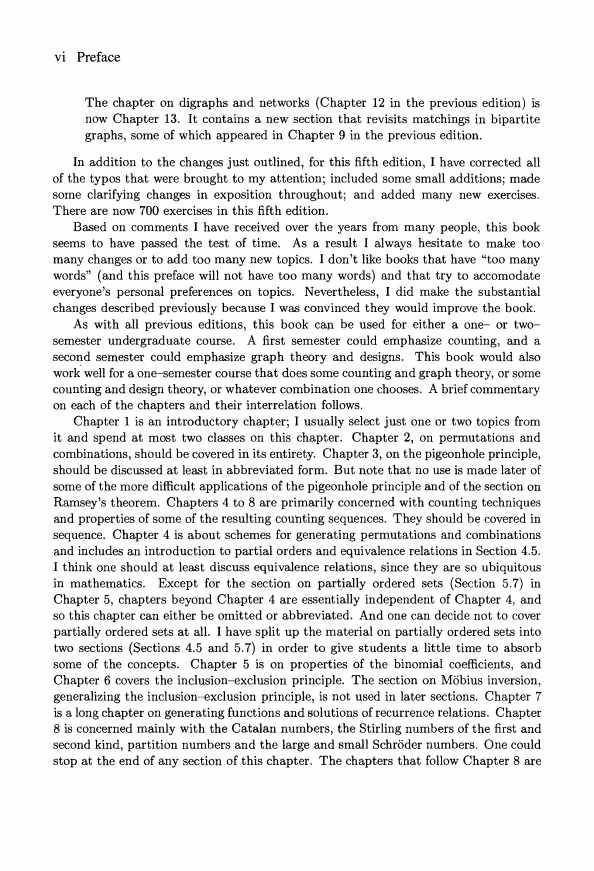
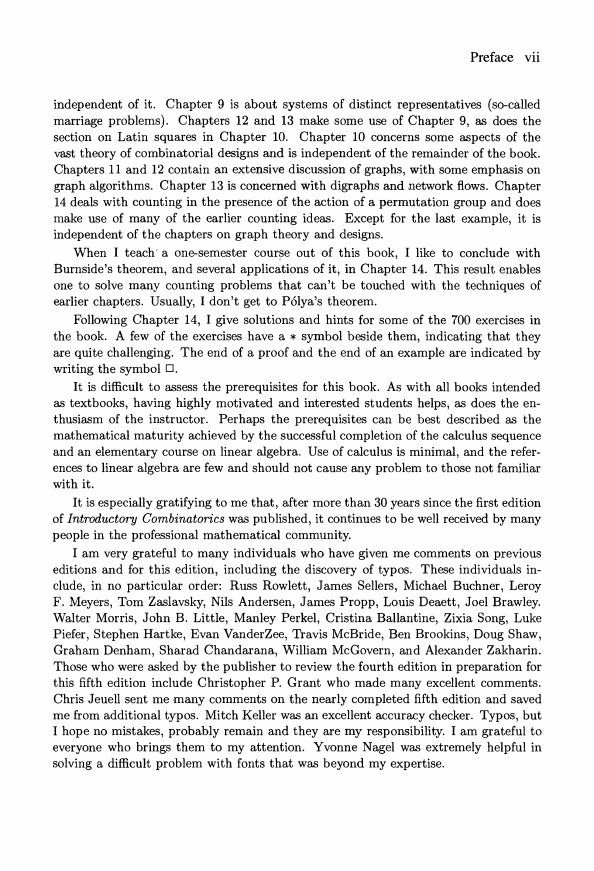








 2023年江西萍乡中考道德与法治真题及答案.doc
2023年江西萍乡中考道德与法治真题及答案.doc 2012年重庆南川中考生物真题及答案.doc
2012年重庆南川中考生物真题及答案.doc 2013年江西师范大学地理学综合及文艺理论基础考研真题.doc
2013年江西师范大学地理学综合及文艺理论基础考研真题.doc 2020年四川甘孜小升初语文真题及答案I卷.doc
2020年四川甘孜小升初语文真题及答案I卷.doc 2020年注册岩土工程师专业基础考试真题及答案.doc
2020年注册岩土工程师专业基础考试真题及答案.doc 2023-2024学年福建省厦门市九年级上学期数学月考试题及答案.doc
2023-2024学年福建省厦门市九年级上学期数学月考试题及答案.doc 2021-2022学年辽宁省沈阳市大东区九年级上学期语文期末试题及答案.doc
2021-2022学年辽宁省沈阳市大东区九年级上学期语文期末试题及答案.doc 2022-2023学年北京东城区初三第一学期物理期末试卷及答案.doc
2022-2023学年北京东城区初三第一学期物理期末试卷及答案.doc 2018上半年江西教师资格初中地理学科知识与教学能力真题及答案.doc
2018上半年江西教师资格初中地理学科知识与教学能力真题及答案.doc 2012年河北国家公务员申论考试真题及答案-省级.doc
2012年河北国家公务员申论考试真题及答案-省级.doc 2020-2021学年江苏省扬州市江都区邵樊片九年级上学期数学第一次质量检测试题及答案.doc
2020-2021学年江苏省扬州市江都区邵樊片九年级上学期数学第一次质量检测试题及答案.doc 2022下半年黑龙江教师资格证中学综合素质真题及答案.doc
2022下半年黑龙江教师资格证中学综合素质真题及答案.doc